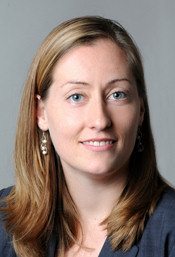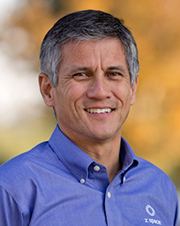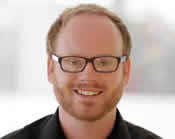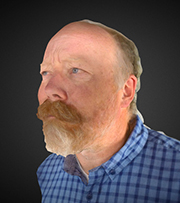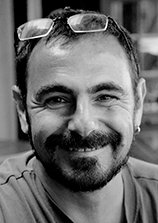


The World's Premier Conference for 3D Innovation
 |
Videos of many of the presentations at the conference are available for free viewing by clicking on the special "Video" icons |
Hyatt Regency San Francisco Airport Hotel, Burlingame, California USA, USA.
To be published open-access as part of the IS&T Proceedings of Electronic Imaging.
Part of IS&T's International Symposium on Electronic Imaging: Science and Technology
Sunday-Thursday 29 January - 2 February 2017 ¤ Hyatt Regency San Francisco Airport, Burlingame, California, California, USA.
[ Advance Program: Day 1, Day 2, Day 3, Keynote 1, Keynote 2, Demonstration Session, 3D Theatre, Discussion Forum ] [ Register, Short Course ]
|
|
| Monday 30th January 2017 |
| SESSION 1 Stereoscopic Human Factors and Applications Session Chair: Takashi Kawai, Waseda University (Japan) |
Mon. 8:50 - 10:20 AM |
8:50 am: Expert viewers' preferences for higher frame rate 3D film (JIST-first), Robert Allison and Laurie Wilcox, York University; Roy Anthony, Christie Digital; John Helliker and Bert Dunk, Sheridan College (Canada) [SD&A-353]
 |
9:10 am: Investigating aircrew depth perception standards using a stereoscopic simulation environment, Marc Winterbottom, James Gaska, Steven Hadley and Logan Williams, U.S. Air Force School of Aerospace Medicine; Charles Lloyd, Visual Performance LLC; Elizabeth Shoda, Wyle Laboratories (United States) [SD&A-354]
 |
9:30 am: Estimation of altitude in stereoscopic-3D versus 2D real-world scenes, Lesley Deas, Robert Allison, Laurie Wilcox and Brittney Hartle, York University; Elizabeth Irving, Univ. of Waterloo; Mackenzie Glaholt, Defence Research and Development Canada (Canada) [SD&A-355]
 |
9:50 am: Study of objective parameters of 3D visual fatigue based on analysis of salient area, Minghan Du, Yue Liu, Yongtian Wang, and Bochao Zou, Beijing Institute of Technology (China) [SD&A-356]
 |
| SD&A Conference Opening Remarks by Andrew Woods, Curtin University (Australia) |
Mon. 10:10 am - 10:20 pm |
| Coffee Break | Mon. 10:20 - 10:50 am |
| SESSION 2 Autostereoscopic Displays I Session Chair: Gregg Favalora, Draper (United States) |
Mon. 10:50 am - 12:30 pm |
10:50 am: Architectures and codecs for real-time light field streaming (JIST-first), Péter Kovács, Tampere University of Technology (Finland) and Holografika (Hungary); Alireza Zare, Nokia Technologies (Finland); Tibor Balogh, Holografika (Hungary); Robert Bregovic and Atanas Gotchev, Tampere University (Finland) [SD&A-357]
 |
11:10 am: Wide viewing angle projection-type integral 3D display system with multiple UHD projectors, Hayato Watanabe, Masahiro Kawakita, Naoto Okaichi, Hisayuki Sasaki, Masanori Kano, Jun Arai, and Tomoyuki Mishina, Science and Technology Research Laboratories, NHK (Japan Broadcasting Corporation) (Japan) [SD&A-358]
11:30 am: A novel hardware based method for multiview glassless 3D display, Laurence Lujun Chen, 4D perception LLC (United States) [cancelled]
11:50 am: Multilevel light modulation of three-dimensional magneto-optic spatial light modulator using optically addressing method, Kazuki Nakamura, Kazuki Yamazaki, Hiroyuki Takagi, Pang Boey Lim, Hironaga Uchida, and Mitsuteru Inoue, Toyohashi University of Technology; Taichi Goto, Toyohashi University of Technology and JST PRESTO (Japan) [SD&A-360] [PRESENTATION ONLY]
 |
12:10 pm: Integral three-dimensional display with high image quality using multiple flat-panel displays, Naoto Okaichi, Hayato Watanabe, Hisayuki Sasaki, Jun Arai, Masahiro Kawakita, and Tomoyuki Mishina, Science and Technology Research Laboratories, NHK (Japan Broadcasting Corporation) (Japan) [SD&A-361]
| Lunch Break | Mon. 12:30 - 2:00 pm |
|
| Coffee Break | 3:00 - 3:30 pm |
| EI 2016 Symposium Reception | Mon. 5:00 - 6:00 pm |
This ever-popular event allows attendees to see large-screen examples of 3D content from around the world. Program announced at the conference. 3D glasses provided.
|
The annual informal dinner for SD&A attendees. An opportunity to meet with colleagues and discuss the latest advances. There is no host for the dinner. Information on venue and cost will be provided on the day at the conference. |
| Tuesday 31st January 2017 |
| SESSION 3 Human Vision and Stereoscopic Imaging (Joint Session) Session Chair: Thrasyvoulos Pappas, Northwestern University (United States) and Nicolas Holliman, Newcastle University (United Kingdom) This session is jointly sponsored by: Stereoscopic Displays and Applications XXVIII and Human Vision and Electronic Imaging 2017. |
Tue. 8:50 - 10:30 am |
8:50 am: Depth-compressed expression for providing natural, visual experiences with integral 3D displays, Yasuhito Sawahata and Toshiya Morita, Japan Broadcasting Corporation (Japan) [HVEI-378]
9:10 am: Blind quality prediction of stereoscopic 3D images, Jiheng Wang, Abdul Rehman, Shiqi Wang, and Zhou Wang, University of Waterloo (Canada); Qingbo Wu, University of Electronic Science and Technology of China (China) [HVEI-379]
9:50 am: Pseudo-haptic by stereoscopic images and effects on muscular activity, Takashi Kawai, Fumiya Ohta, Sanghyun Kim, Waseda University; and Hiroyuki Morikawa, Waseda University and Aoyama Gakuin University (Japan) [SD&A-380]
 |
10:10 am: The effects of proximity cues on visual comfort when viewing stereoscopic contents (JIST-first), Yaohua Xie, Chinese Academy of Sciences; Danli Wang, Institute of Software, Chinese Academy of Sciences; and Heng Qiao, Central University of Finance and Economics (China) [SD&A-381]
 |
| Coffee Break | Tues. 10:30 - 10:50 am |
| SESSION 4 Autostereoscopic Displays II Session Chair: Michael Klug, Magic Leap, Inc. (United States) |
Tue. 10:50 am - 12:10 pm |
10:50 am: See-through projection 3D display using time-division multiplexing, Masahiro Kajimoto, Hiroki Kamoshita, and Tomohiro Yendo, Nagaoka Univ. of Technology (Japan) [SD&A-363]
 |
11:10 am: Flat autostereoscopic 3D display with enhanced resolution using a static color filter barrier, Silvio Jurk, Mathias Kuhlmey, Roland Bartmann, Bernd Duckstein, and René de la Barré, Fraunhofer Heinrich-Hertz-Institute (Germany) [SD&A-364]
 |
11:30 am: Portrait and landscape mode convertible stereoscopic display using parallax barriers, Yusuke Minami, Saki Osafune, Goro Hamagishi, Kayo Yoshimoto, and Hideya Takahashi, Osaka City Univ. (Japan) [SD&A-365]
 |
11:50 am: Digital holographic display with two-dimensional and three-dimensional convertible feature by high speed switchable diffuser, Keehoon Hong, Yongjun Lim, Kwan-Jung Oh, and Hyon-Gon Choo, Electronics and Telecommunications Research Institute (South Korea) [SD&A-366]
 |
12:10 pm: A Low-Cost Static Volumetric Display based on Layered High Incidence Angle Scattering, Shawn Frayne, Looking Glass (United States) [SD&A-382] [PRESENTATION ONLY]
 |
| Lunch Break | Tues. 12:30 - 2:00 pm |
|
| Coffee Break | Tues. 3:00 - 3:30 pm |
| SESSION 5 Stereo-cameras and Stereo-matching Session Chair: Neil Dodgson, Victoria University of Wellington (New Zealand) |
Tue. 3:30 - 4:30 pm |
3:30 pm: Real time depth estimation method using hybrid camera system, Eu-Tteum Baek and Yo-Sung Ho, Gwangju Institute of Science and Technology (GIST) (South Korea) [SD&A-367]
 |
3:50 pm: Pixel based adaptive normalized cross correlation for illumination invariant stereo matching, Yong-Jun Chang and Yo-Sung Ho, Gwangju Institute of Science and Technology (GIST) (South Korea) [SD&A-368]
 |
4:10 pm: Guided image filtering based disparity range control in stereo vision, Ji-Hun Mun and Yo-Sung Ho, Gwangju Institute of Science and Technology (GIST) (South Korea) [SD&A-369]
 |
The SD&A Discussion Forum is a great opportunity to hear a panel of stereoscopic luminaries discuss a topic of high stereoscopic relevance. Topic and speakers to be announced closer to the event. Please visit the conference website www.stereoscopic.org or join the SD&A Linkedin group for updates. |
| ||
|
Demonstrations
A symposium-wide demonstration session will be open to attendees 5:30 to 7:30 pm Tuesday evening. Demonstrators will provide interactive, hands-on demonstrations of a wide-range of products related to Electronic Imaging. The demonstration session hosts a vast collection of stereoscopic products providing a perfect opportunity to witness a wide array of stereoscopic displays with your own two eyes. More information: http://www.stereoscopic.org/demo/index.html. |
| Wednesday 1st February 2017 |
| SESSION 6 Stereoscopic Image Quality Session Chair: Björn Sommer, University of Konstanz (Germany) |
Wed. 8:50 - 10:10 am |
8:50 am: Sharpness mismatch and 6 other stereoscopic artifacts measured on 10 Chinese S3D movies, Dmitriy Vatolin, Lomonosov Moscow State University (Russian Federation) [SD&A-340]
 |
9:10 am: Bringing 3DMap to the 21st century, Stephan Keith, Independent Consultant (United States) and Andrew Woods, Curtin University (Australia) [SD&A-370] [PRESENTATION ONLY]
 |
9:30 am: Subjective and objective study of the relation between 3D and 2D views based on depth and bitrate, Balasubramanyam Appina, IIT Hyderabad (India) [SD&A-371]
 |
9:50 am: Improved depth of field analysis of multilayer displays, Hironobu Gotoda, National Institute of Informatics (Japan) [SD&A-373]
 |
| Coffee Break | Wed. 10:10 - 10:50 am |
| SESSION 7 3D Developments Session Chair: Takashi Kawai, Waseda University (Japan) |
Wed. 10:50 - 11:30 am |
10:50 am: Stereo rendering of photorealistic precipitation, Syed Hussain and David McAllister, North Carolina State University (United States) [SD&A-374]
11:10 am: The Utilization of Stereoscopic 3D Images in Elementary School Social Studies Classes, Takashi Shibata1, Yoshiki Ishihara1, Kazunori Sato2,3, Ryohei Ikejiri4. 1: Tokyo University of Social Welfare (Japan), 2: Takaido-higashi Elementary School (Japan), 3: Tohoku University (Japan), 4: The University of Tokyo (Japan) [SD&A-372]
|
| Lunch Break | Wed. 12:30 - 2:00 pm |
|
| Coffee Break | Wed. 3:00 - 3:30 pm |
| SESSION 8 Visualization Facilities (Joint Session) Session Chairs: Margaret Dolinsky, Indiana University (United States) and Andrew Woods, Curtin University (Australia) This session is jointly sponsored by: Stereoscopic Displays and Applications XXVIII and The Engineering Reality of Virtual Reality 2017. |
Wed. 3:30 - 5:40 pm |
3:30 pm: Designing a Cloud-based 3D Visualization Engine for Smart Cities, Nicolas Holliman, Stephen Dowsland, Mark Turner, Richard Cloete, and Tom Picton, Newcastle University (UK) [SD&A-105]
 |
3:50 pm: Interactive computer graphics, stereo and VR practice at the Electronic Visualization Laboratory University of Illinois at Chicago, Maxine Brown, The University of Illinois at Chicago; Jason Leigh, University of Hawai'i at Manoa; Tom DeFanti, Univ. of California, San Diego; and Daniel Sandin (United States) [SD&A-106] [PRESENTATION ONLY]
 |
4:10 pm: Designing at the Advanced Visualization Lab at Indiana University, Margaret Dolinsky, Eric Wernert, Michael Boyles, and Chris Eller, Indiana University (United States) [ERVR-107] [PRESENTATION ONLY]
 |
4:30 pm: Exploring Calit2, Jürgen Schulze and Gregory Dawe, Univ. of California, San Diego (United States) [ERVR-108] [PRESENTATION ONLY]
 |
4:50 pm: 3D-Stereoscopic immersive analytics projects at Monash University and University of Konstanz, Björn Sommer, Karsten Klein and Falk Schreiber, Monash University and University of Konstanz (Germany); David G. Barnes, Monash University and Monash Immersive Visualization Platform at Monash University; Sarah Boyd, Thomas Chandler, Maxime Cordeil, Tobias Czauderna, Matthias Klapperstück, Elliott Wilson, Jon McCormack, Kim Marriott, Kingsley Stephens, Monash University; Toan Nguyen, Monash Immersive Visualization Platform at Monash University; Hieu Nim, Monash University and Australian Regenerative Medicine Institute of Monash University (Australia); Dany Vohl, Swinburne University of Technology (Australia); Stephen Wang, International Tangible Interaction Design Lab & Department of Design at Monash University (Australia) [SD&A-109]
 |
5:10 pm: Image distortions in large-scale immersive display systems - Cylinder and wedge displays, Andrew Woods, Joshua Hollick and Jesse Helliwell, Curtin University; Paul Bourke, University of Western Australia (Australia) [SD&A-110] [PRESENTATION ONLY]
 |
| SD&A Conference Closing Remarks by Nicolas Holliman, Newcastle University (United Kingdom) |
Wed. 5:30 pm - 5:40 pm |
| Stereoscopic Displays and Applications XXVIII Interactive Papers (Poster) Session The following works will be presented at the EI 2017 Symposium Interactive Papers Session on Wednesday evening, from 5:40 pm to 7:00 pm. Refreshments will be served. |
Wed. 5:40 - 7:00 pm |
- Analysis of retinal images for retinal projection type super multi-view 3D head-mounted display, Takashi Emoto, Tadayuki Konda, Kayo Yoshimoto, and Hideya Takahashi, Osaka City Univ. (Japan)
[SD&A-376]

- A new design and algorithm for lenticular lenses display, René de la Barré, Roland Bartmann, Mathias Kuhlmey, Bernd Duckstein, and Silvio Jurk, Fraunhofer HHI (Germany)
[SD&A-377]




